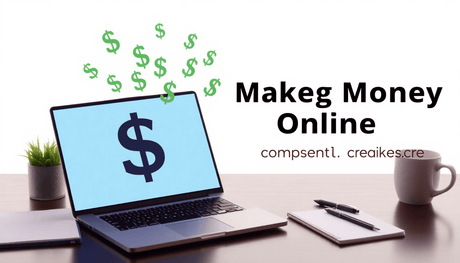Introduction
Private Label Rights (PLR) licensing is a powerful tool in the digital content market. It allows entrepreneurs, educators, and content creators to access ready-made content that can be customized and rebranded for their specific needs. This flexibility makes PLR an attractive option for those looking to save time and resources while still delivering high-quality materials.
The future of PLR licensing is evolving. Understanding emerging trends is essential for marketers and content creators aiming to maintain a competitive edge.
In this article, you will learn about:
- The evolution of PLR licensing and its current state.
- Dynamic content creation's impact on the industry.
- The shift towards prioritizing quality over quantity in offerings.
- The integration of multimedia formats.
- The role of AI in enhancing PLR products.
- Flexible licensing models catering to changing buyer preferences.
- Strategies for capitalizing on niche-specific opportunities.
- Effective selling strategies for success.
- Ensuring quality assurance throughout the lifecycle of PLR products.
One such opportunity lies in the realm of video courses with private label rights. These courses provide a unique avenue for reselling and profit generation.
Moreover, as PLR continues to evolve, learning new skills becomes essential. For instance, mastering Microsoft Excel can significantly enhance data management capabilities, which is a crucial aspect of content creation and marketing.
Similarly, understanding the intricacies of freelancing can open up additional revenue streams. With platforms like YouTube, WordPress, Upwork, and Fiverr at your disposal, the potential for earning from a freelance business online is immense.
Lastly, acquiring skills in CSS can greatly improve your website's aesthetic appeal and functionality. This knowledge will allow you to apply cascading style sheets to your HTML pages and bring them to life, making your online presence more engaging.
1. The Evolution of PLR Licensing
The history of PLR licensing goes back to traditional content formats, where authors would give others the rights to change and share their work. This model was mainly common in print media, allowing marketers to reach a wider audience without having to create content from scratch.
Transition to the Digital Age
With the advent of the digital age, PLR licensing evolved into a thriving online marketplace. Businesses and entrepreneurs started using digital content as a way to enhance their offerings. Here are some key aspects of this evolution:
- Accessibility: Digital products are easier to distribute and customize.
- Diverse Formats: PLR now includes eBooks, articles, videos, and courses. For example, you can find successful meditation guides or resources on financial freedom, both of which are popular digital products.
- Growing Popularity: More people are recognizing the potential of PLR for branding and reselling.
The Significance of PLR Today
As a result of this evolution, PLR has become an essential tool for those looking to save time and resources while still delivering valuable content. Whether it's creating a jQuery image slider project or learning the JAVA coding language, PLR offers a wide range of opportunities. Additionally, with courses like smartphone photography, one can further diversify their skill set.
2. Dynamic Content Creation: A Game Changer in PLR Licensing
Dynamic content creation has fundamentally transformed the landscape of Private Label Rights (PLR) licensing. This innovative approach allows marketers to develop and offer customizable content tailored to meet specific audience needs. By leveraging technology, content creators can produce materials that are not only relevant but also adaptable, ensuring that they resonate with various target demographics.
Key Benefits of Dynamic Content Creation
- Customization: Marketers can modify PLR products to suit their branding, message, and customer preferences. This adaptability enhances user engagement and satisfaction.
- Niche-Specific Products: Focusing on particular market segments allows for the development of specialized PLR offerings. This approach positions marketers as authorities in their niches, fostering trust and loyalty among customers.
- Competitive Advantage: In a saturated market, standing out is crucial. Offering unique, customizable PLR products can differentiate your brand from competitors who may rely on generic content.
Dynamic content creation empowers entrepreneurs and educators alike to harness the full potential of PLR licensing. By prioritizing customization and niche focus, you can create valuable resources that cater to the evolving demands of your audience. For instance, creating a customizable HTML5 game or developing a niche-specific TEFL survival guide are examples of how dynamic content can be utilized effectively. Additionally, mastering tools like Git for source file storage and version control through courses such as this Introduction to using Git, can further enhance your content creation capabilities.
3. Quality Over Quantity: The New Standard in PLR Offerings
The world of Private Label Rights (PLR) is undergoing a major change. Instead of focusing on producing large amounts of content, the emphasis is now on creating high-quality content. Marketers and content creators are starting to understand how important it is to provide well-researched resources that truly benefit users. This shift shows that there is a better understanding of what consumers want and expect.
Key aspects include:
- Well-Researched Materials: Emphasis on thorough research ensures that PLR products are not only informative but also credible. This builds trust with buyers, who seek reliable information to support their projects. For instance, incorporating resources like the Google Apps Script Guide to the New IDE can significantly enhance the quality of PLR offerings by providing valuable technical knowledge.
- Customer Satisfaction: High-quality outputs directly lead to enhanced customer satisfaction. Satisfied customers are likely to return for future purchases, fostering long-term relationships between creators and buyers.
- Competitive Edge: In a crowded market, offering superior PLR content can distinguish your offerings from competitors. This differentiation attracts discerning marketers looking for materials that resonate with their audience.
Putting effort into making top-notch PLR products will ultimately help businesses succeed in the ever-changing digital content marketplace. By embracing this new standard, marketers can meet increasing demands while building brand loyalty among consumers. Plus, platforms like Uthena give creators chances to submit new courses, which expands their reach and potential in delivering high-quality PLR content even further.
4. Multimedia Integration: Meeting the Demand for Diverse Learning Formats
The world of PLR licensing is undergoing a significant change with a growing focus on multimedia content. Entrepreneurs and marketers are increasingly realizing the importance of including various formats like:
- Videos
- Podcasts
- Interactive elements
These formats cater to different learning preferences, making it crucial for PLR products to adapt accordingly. The rise in demand for such content reflects a broader trend in education and training, where engaging methods significantly enhance user experience.
Incorporating multimedia into PLR offerings yields several benefits:
- Increased Engagement Levels: Visual and auditory elements capture attention more effectively than traditional text-based content. This engagement encourages users to interact with the material.
- Improved Learning Outcomes: Research shows that users retain information better when exposed to multiple formats. For instance, PLR video courses allow learners to grasp complex concepts through visual aids and demonstrations.
By embracing multimedia integration, PLR providers can elevate their offerings, ensuring they meet the expectations of a modern audience seeking dynamic and varied learning experiences. Platforms like Uthena are leading this charge by offering PLR licenses to video courses that can be seamlessly integrated into websites or online schools. However, it's crucial for users to understand their rights regarding personal information when engaging with such platforms. To learn more about opting out of data sales or sharing, you can refer to Uthena's data sale opt-out policy.
5. AI-Enhanced Content Generation: The Future Frontier in PLR Licensing
Artificial intelligence is changing the world of PLR licensing by bringing in new and creative ways to make and improve content. Tools powered by AI let marketers automate the process of creating content, making sure the results are top-notch while reducing the need for manual work. This change brings many advantages:
1. Efficiency
AI makes workflows smoother, enabling marketers to produce content more quickly. Tasks that used to take hours can now be done in just a few minutes.
2. Scalability
With AI, it becomes possible to scale your content offerings. You can rapidly expand your product lines without compromising on quality.
However, there are some challenges to keep in mind when using AI-generated content:
1. Quality Control
Automated systems can sometimes churn out generic or subpar outputs. It's crucial to have strict quality assurance processes in place to uphold standards.
2. Authenticity Concerns
Consumers might view AI-generated content as less genuine. Striking a balance between automation and personal touch is vital for earning your audience's trust.
AI's role in enhancing PLR products marks a significant shift where efficiency meets creativity. Marketers need to tread carefully in this ever-changing landscape, leveraging the power of artificial intelligence while tackling its inherent obstacles.
To demonstrate the potential of AI across different industries, check out Uthena's Home Automation Using J.A.R.V.I.S AI With Arduino course. This course showcases how artificial intelligence can be integrated into everyday tasks, such as home automation.
Additionally, skills acquired from courses like Learn Advanced Python Programming can further enhance the use of AI in content generation by enabling marketers to automate processes more effectively.
Lastly, understanding how to pitch an AI-enhanced product or service is crucial in today's market. The Investor Business Pitch course provides valuable insights on how to present such innovative ideas to potential investors successfully.
6. Flexible Licensing Models: Adapting to Changing Buyer Preferences
The world of PLR licensing is changing. The current licensing models often have limitations for buyers, affecting how they can use the content. Here are some common models:
- Single-use licenses limit distribution and repurposing.
- Multi-use licenses offer broader usage but can still restrict modifications.
- Resell rights allow for selling but may not support branding or customization.
These restrictions can prevent marketers and content creators from fully making use of PLR products. As buyer preferences change, there is a clear demand for more usage flexibility.
Predictions suggest that flexible licensing options catering to specific needs will become more popular. Some expected developments may include:
- Tiered licensing structures, allowing buyers to choose levels of rights based on their objectives.
- Customizable packages, enabling users to select features most relevant to their strategies.
- Collaborative licenses, encouraging shared use among multiple stakeholders while maintaining ownership.
These trends will likely enhance buyer satisfaction and foster stronger relationships between sellers and customers. The shift towards adaptable licensing models shows a proactive response to the ever-changing nature of digital content consumption in the PLR industry. Understanding these emerging trends is crucial for marketers looking to effectively utilize licensing rights.
7. Capitalizing on Niche-Specific Opportunities: A Profitable Strategy for Marketers
Emerging niche markets within the realm of PLR licensing present exciting avenues for entrepreneurs. These specialized products cater to specific demographics or interests, allowing marketers to tap into underserved areas. Examples of profitable niches include:
- Health and Wellness: Customizable PLR content focusing on diet plans, fitness routines, and mental well-being.
- Personal Finance: Tailored courses on budgeting, investing, and financial literacy targeted at specific groups like millennials or retirees.
- Hobbies and Crafts: PLR resources that appeal to enthusiasts in areas such as gardening, knitting, or DIY projects.
To effectively identify lucrative niche-specific gaps in the market, consider these strategies:
- Market Research: Analyze trends using tools like Google Trends or social media platforms to discover what topics are gaining traction.
- Customer Feedback: Engage with your audience through surveys and polls to understand their specific needs and interests.
- Competitor Analysis: Observe what successful marketers are offering in niche markets to uncover potential gaps you can fill.
By positioning your offerings strategically within these specialized sectors, you enhance your chances of success while providing valuable content tailored to audience needs. Moreover, leveraging web development tools can significantly improve your online presence and make it easier to reach your target demographic in these niche markets.
8. Effective Selling Strategies for Success in the Competitive World of PLR Products
Selling PLR products effectively requires a strategic approach that resonates with your target audience. Consider these key strategies:
1. Rebranding
Customize PLR products to align with your brand’s identity. This enhances uniqueness and helps you stand out in a saturated market.
2. Targeting Popular Topics
Research industry trends and identify high-demand topics. For instance, creating content around subjects like cryptocurrency mining could significantly increase your chances of attracting potential buyers.
Utilizing various online platforms plays a critical role in expanding your reach:
- Social Media Marketing: Leverage platforms like Facebook, Instagram, and LinkedIn to promote your PLR offerings. Create engaging posts that highlight the benefits of your products, including testimonials from satisfied customers.
- Email Campaigns: Build an email list to nurture relationships with potential buyers. Send regular newsletters featuring valuable content, product launches, or special promotions.
- Content Marketing: Develop blog posts or videos that showcase your expertise in the niche. By providing valuable information, you can attract visitors who may convert into customers for your PLR products.
Implementing these selling techniques can significantly enhance visibility and drive sales in the competitive PLR marketplace. Additionally, consider diversifying your product offerings by including video courses, which you can sell without filming, thus expanding your revenue potential even further.
9. Ensuring Quality Assurance Throughout the Entire Lifecycle of PLR Products
Quality assurance measures are vital in maintaining trust and satisfaction among consumers in the PLR market. Implementing robust quality assurance processes at every stage—from creator selection through to final delivery—ensures that products meet high standards. This commitment to quality can significantly differentiate your offerings from competitors.
To achieve this, you might consider implementing ultimate auditing and assurance practices, which can provide a comprehensive framework for quality control.
Key Best Practices for Quality Assurance:
- Creator Selection: Choose experienced creators with a proven track record in producing valuable content. Review their portfolios and client testimonials to gauge their capabilities.
- Content Review: Establish a review process that involves subject matter experts to evaluate the content's relevance and accuracy before release.
- Feedback Loops: Encourage buyer feedback on products to identify areas for improvement. This not only enhances product quality but also builds a relationship with your audience.
- Regular Updates: Ensure that PLR products remain current by scheduling periodic updates, especially for topics that evolve rapidly.
- Clear Licensing Terms: Provide transparent licensing agreements that outline what buyers can expect regarding quality and usage rights.
By focusing on these best practices, both buyers and sellers in the PLR space can foster a culture of quality, enhancing customer satisfaction and loyalty. Building a reputation for high-quality outputs will ultimately contribute to the sustainability of your business within this evolving landscape of PLR licensing.
Conclusion: Embracing Change in the Ever-Evolving Landscape of PLR Licensing
The future of PLR licensing is marked by rapid changes and innovations. Adapting to these shifts is essential for marketers and content creators. Key areas to focus on include:
- AI Integration: Streamlining content generation while maintaining quality.
- Multimedia Enhancements: Diversifying content formats to meet varied learner demands.
Staying informed about these emerging developments will empower you to navigate this dynamic field effectively.
Engage with industry trends, network with other professionals, and continuously evolve your strategies. Understanding the future predictions for PLR licensing can position you ahead of the competition. Embrace change as an opportunity to enhance your offerings and build lasting relationships with your audience.
FAQs (Frequently Asked Questions)
What is PLR licensing and why is it important in digital content creation?
Private Label Rights (PLR) licensing allows marketers and content creators to purchase content that they can modify, brand, and sell as their own. This licensing model is significant in the digital content market as it provides a cost-effective way to generate high-quality materials without starting from scratch.
How has PLR licensing evolved over the years?
PLR licensing has transitioned from traditional content formats to a more digital-centric approach. Its growing popularity among businesses and entrepreneurs reflects the increasing demand for ready-to-use content that can be customized for various audiences.
What are the benefits of dynamic content creation in PLR products?
Dynamic content creation allows for customizable and niche-specific PLR products, enabling marketers to stand out in a competitive landscape. It enhances user engagement by providing tailored solutions that meet specific needs.
Why is quality prioritized over quantity in modern PLR offerings?
The shift towards quality over quantity in PLR products emphasizes the importance of well-researched, high-quality materials. Delivering valuable outputs not only improves customer satisfaction but also fosters long-term relationships with buyers.
How does multimedia integration enhance PLR products?
Incorporating multimedia elements such as videos, podcasts, and interactive features into PLR products meets the rising demand for diverse learning formats. This integration increases engagement levels and leads to improved learning outcomes for users.
What role does artificial intelligence play in the future of PLR licensing?
Artificial intelligence is set to revolutionize PLR licensing by streamlining content generation processes while maintaining high-quality standards. It offers advantages like efficiency and scalability, although marketers must also navigate potential challenges associated with AI-generated content.









